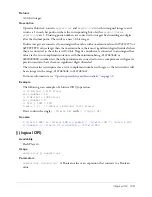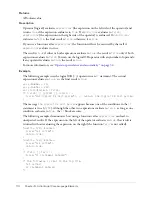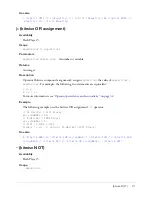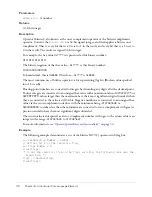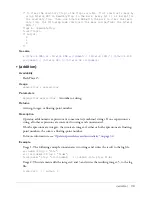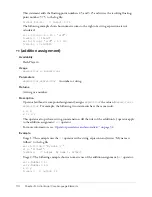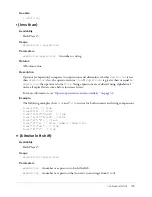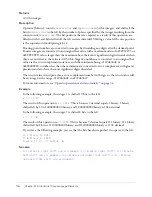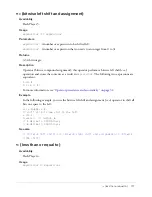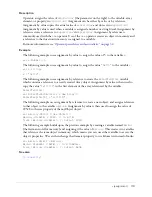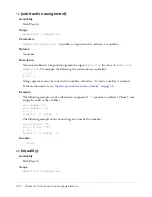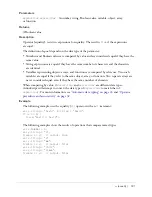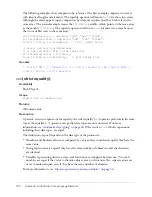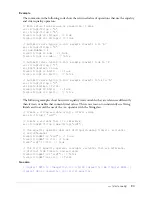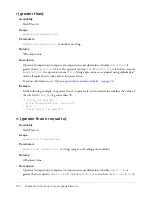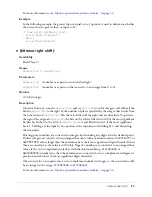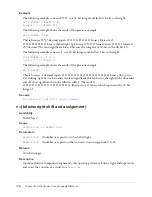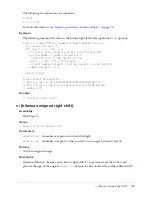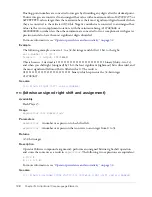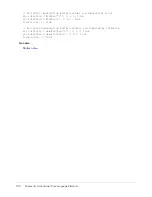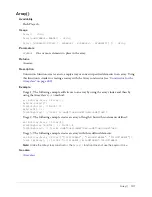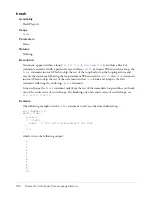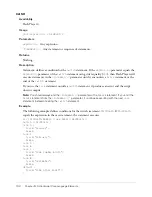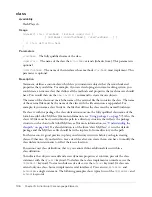
122
Chapter 5: ActionScript Core Language Elements
The following examples show comparison by reference. The first example compares two arrays
with identical length and elements. The equality operator will return
false
for these two arrays.
Although the arrays appear equal, comparison by reference requires that they both refer to the
same array. The second example creates the
thirdArray
variable, which points to the same array
as the variable
firstArray
. The equality operator will return
true
for these two arrays because
the two variables refer to the same array.
var firstArray:Array = new Array("one", "two", "three");
var secondArray:Array = new Array("one", "two", "three");
trace(firstArray == secondArray); // will output false
// Arrays are only considered equal
// if the variables refer to the same array.
var thirdArray:Array = firstArray;
trace(firstArray == thirdArray); // will output true
See also
! (logical NOT)
,
!= (inequality)
,
!== (strict inequality)
,
&& (logical AND)
,
||
(logical OR)
,
=== (strict equality)
=== (strict equality)
Availability
Flash Player 6.
Usage
expression1
===
expression2
Returns
A Boolean value.
Description
Operator; tests two expressions for equality; the strict equality (
===
)operator performs in the same
way as the equality (
==
) operator, except that data types are not converted. (For more
information, see
“Automatic data typing” on page 24
.) The result is
true
if both expressions,
including their data types, are equal.
The definition of
equal
depends on the data type of the parameter:
•
Numbers and Boolean values are compared by value and are considered equal if they have the
same value.
•
String expressions are equal if they have the same number of characters and the characters
are identical.
•
Variables representing objects, arrays, and functions are compared by reference. Two such
variables are equal if they refer to the same object, array, or function. Two separate arrays are
never considered equal, even if they have the same number of elements.
For more information, see
“Operator precedence and associativity” on page 32
.
Summary of Contents for FLEX-FLEX ACTIONSCRIPT LANGUAGE
Page 1: ...Flex ActionScript Language Reference...
Page 8: ......
Page 66: ...66 Chapter 2 Creating Custom Classes with ActionScript 2 0...
Page 76: ......
Page 133: ...break 133 See also for for in do while while switch case continue throw try catch finally...
Page 135: ...case 135 See also break default strict equality switch...
Page 146: ...146 Chapter 5 ActionScript Core Language Elements See also break continue while...
Page 808: ...808 Chapter 7 ActionScript for Flash...
Page 810: ...810 Appendix A Deprecated Flash 4 operators...
Page 815: ...Other keys 815 Num Lock 144 186 187 _ 189 191 192 219 220 221 222 Key Key code...
Page 816: ...816 Appendix B Keyboard Keys and Key Code Values...
Page 822: ...822 Index...


